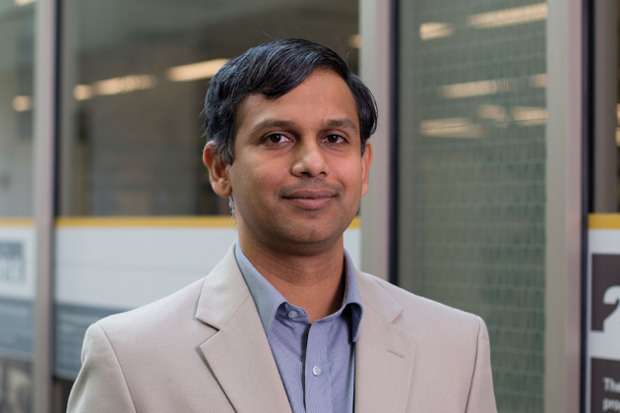Engineering researchers develop a process that could make big data and cloud storage more energy efficient

As big data and cloud applications flourish, one of the grand challenges for future computing is finding energy-efficient methods for data storage.
Magnetic material is commonly used for data storage—think of magnetic strips on the back of a credit card—and the ability to flip the "polarity" (magnetization direction) of magnetic particles that are retained for long periods of time without needing power is essential to nonvolatile magnetic memory.
A group of researchers at the Virginia Commonwealth University School of Engineering has developed a process to bring about this flipping of magnetic "polarity." The group's method offers a significant reduction in energy required for big data and cloud memory storage.
"When you look at the energy reduction that this affords, it's a major change," said Jayasimha Atulasimha, Ph.D., Qimonda associate professor in the Department of Mechanical and Nuclear Engineering. "This has the potential to significantly reduce the energy consumption in switching non-volatile magnetic memory devices."
The system that Atulasimha and doctoral candidates Dhritiman Bhattacharya and Md Mamun Al-Rashid have designed uses an electric field to reverse the direction of magnetic skyrmions. A magnetic skyrmion is a magnetic state characterized by a core that points either upward or downward, and progressively rotates from its core to its periphery.
Bhattacharya discovered that an electrical field alone could bring about a flip in core magnetization. Using an electric field, instead of current or a magnetic field, presents the possibility of more energy-efficient magnetic memory for computing.
"The exciting thing about this kind of magnetic encoding is that it only takes a small amount of energy to flip and once you have the direction you want, it can stay there for a long time. No additional energy is needed," Bhattacharya said.
Al-Rashid benchmarked Bhattacharya's findings independently.
"We were surprised at the early results that an electric field alone could reverse the skyrmion core but now understand why this happens," said Al-Rashid.
In the next phase of the group's research, they will investigate how this process works in the presence of thermal noise at room temperature. They will also determine how controlled the process is in order to assess whether the polarities can be reversed every time in the presence of such disturbances.
In addition to energy savings for big data storage, this technology may have applications in body-embedded devices so that they can run with less frequent battery replacements. It may also provide a tool for more sophisticated logic in data processing and retrieval.
"Right now we have an idea backed by rigorous simulations," Atulasimha said. "We hope to study this system more extensively as well as work in collaboration with other experimental groups to establish a solid proof-of-concept in the hope that this idea sees applications in one of these areas."
Provided by Virginia Commonwealth University




















